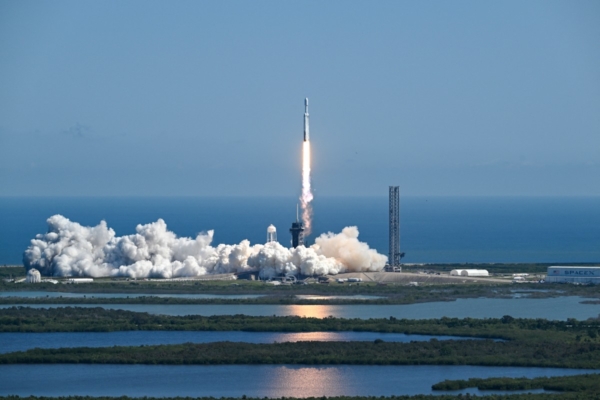Is there any other place in the solar system besides Earth that can provide an environment for life to exist? The National Aeronautics and Space Administration (NASA) took the first step towards finding an answer to this question on Monday, October 14th. NASA’s “Europa Clipper” was launched from Florida to explore Jupiter’s moon “Europa” to see if it has conditions suitable for life.
Now, the spacecraft has successfully entered orbit. NASA confirmed that they received signals from the “Europa Clipper” about 1 hour and 10 minutes after the launch, indicating that the mission control center is in communication with the spacecraft and receiving data.
“Today, we embark on a new journey through the solar system, searching for the building blocks of life on the icy moons of Jupiter,” said NASA Administrator Bill Nelson on social media platform X. “The next chapter of our space exploration has begun.”
The launch was originally scheduled for October 10 but was delayed to this Monday due to Hurricane “Milton”.
“Europa” is the fourth largest moon of Jupiter. Despite being only a quarter of Earth’s diameter, it may contain twice the amount of liquid salty water as the Earth’s oceans. The moon has a diameter of approximately 1,940 miles (3,100 kilometers), about 90% of the diameter of the Moon, and is considered a potential habitat for extraterrestrial life in the solar system. It is believed to have an ice crust about 10-15 miles (15-25 kilometers) thick, beneath which lies an ocean about 40-100 miles (60-150 kilometers) deep.
The “Europa Clipper” is the largest spacecraft built by NASA for planetary missions, measuring about 100 feet (30.5 meters) long and 58 feet (17.6 meters) wide. When its antennas and solar arrays are fully deployed, it is larger than a basketball court. It weighs around 13,000 pounds (6,000 kilograms).
This solar-powered probe will travel approximately 1.8 billion miles (about 2.9 billion kilometers) over the course of 5 and a half years and is expected to enter Jupiter’s orbit in 2030. Mission objectives include measuring the internal ocean and ice shell, mapping surface compositions, and searching for potential water vapor plumes erupting from Europa’s ice shell. The “Europa Clipper” is planned to conduct 49 flybys of Europa over a three-year period starting in 2031, getting as close as 16 miles (25 kilometers) at its closest approach.
NASA Deputy Administrator Jim Free stated in a briefing on Sunday, October 13, that Europa has one of the most promising environments besides Earth in the solar system that could potentially be habitable. However, he noted that this mission is not about finding actual organisms.
“Our discoveries on Europa will have profound implications for astrobiology research and how we view our place in the universe,” he said.
The “Europa Clipper” is perhaps the most important planetary science mission launched this decade. As one of NASA’s flagship missions, it will be the largest planetary science mission ever developed by NASA, providing an in-depth exploration of Europa and its potential habitability.
“Scientists believe that under Europa’s icy surface, there are conditions suitable for life to exist, including water, energy, chemistry, and stability,” said NASA Science Mission Directorate Deputy Director Sandra Connelly.
(This article has been referenced from Reuters’ report)

